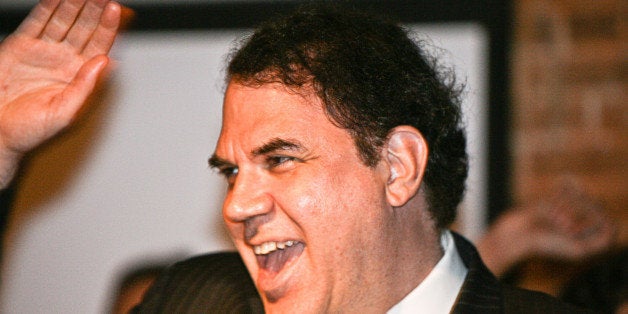
WASHINGTON -- Three members of Congress this week sent a letter to top federal regulators urging them to adopt tougher capital requirements for big banks, in an effort to limit the damage from future financial crises and to end bailouts.
The letter from Reps. John Conyers (D-Mich.), Keith Ellison (D-Minn.) and Alan Grayson (D-Fla.) have garnered more than 100,000 co-signatures since Grayson posted a petition at NoBankWelfare.com. Liberal organizations Progressive Change Campaign Committee, Credo Action and Progressives United have promoted the letter.
Capital standards deal with the amount of money that banks are required to keep on hand to cope with losses, and limit the scope of speculative bets banks can make with borrowed cash. The letter argues that the U.S. banking system encourages bailouts by allowing "too much gambling with other peoples' money, by banks that are often regarded as too big to fail."
"A financial institution with a lot of equity can absorb unexpected losses, whereas one with too much debt relative to its equity will fail in the face of financial stress," the letter reads.
Banks generally don't like sitting on money, because they earn profits by lending it out and using it to back securities trades. Regulators require multiple types of capital cushions, including one that ties the minimum capital levels to the perceived risk of the assets a bank owns. Such risk-adjusted standards can be problematic in a crisis, or whenever assets scored as low-risk actually go sour, as in 2008 when billions of dollars in top-rated mortgage bonds took heavy losses. Because risk-adjusted standards are complex, they can be manipulated by bankers looking to hide risk in apparently safe harbors.
Regulators therefore have proposed a secondary measure to force a bank to carry a set minimum amount of capital relative to its total assets, regardless of the risk those assets might pose. The representatives' letter supports this stricter capital requirement.
The Federal Reserve, the Office of the Comptroller of the Currency and the Federal Deposit Insurance Corporation have proposed a rule that would require the nation's largest banks to maintain a minimum capital cushion of at least 3 percent of total assets, and of 6 percent in order to pay out bonuses to executives. The rule would apply to any bank officially designated as a "Systemically Important Financial Institution."
"We think the standard you have proposed, a supplementary leverage ratio, is less prone to manipulation and more likely to succeed than many alternatives," the lawmakers wrote. "At the same time, we also believe that the proposed ratio is simply too low."
A 3 percent standard would allow banks to borrow more than $33 for every $1 held in equity. When financial markets began staggering in the fall of 2007, Lehman Brothers reported a leverage ratio of 30.7-to-1, according to SEC filings. Within a year, the firm ran out of capital and filed for bankruptcy.
The rules would include an additional 2 percent standard for the holding companies of large banks, meaning overall parent companies would see a 5 percent minimum. Large banks have dozens of subsidiaries and affiliates in which they can hide risk, and the higher ratio for the holding company is intended to include all of this activity.
Conyers, Ellison and Grayson questioned the efficacy of having different ratios for the bank and its holding company, suggesting that it would encourage firms to shift assets to appeal to the weakest standard. Banks wary of breaking the 6 percent bonus threshold might dump assets in a subsidiary (although companies have a long record of making creative payments to avoid compensation restrictions). The lawmakers did not call for a specific threshold, but cited FDIC Vice Chairman Thomas Hoenig's suggestion that banks carry about 10 percent in hard capital, and Stanford University economist Anat Admati's recommendation for a 20 percent threshold for the nation's largest banks.
Bank lobby groups have filed their own comment letter asking to delay the rule, to allow for a looser definition of capital, and to exempt certain types of assets from the rule.
Technical bank regulatory standards are not traditionally a hot-button issue for progressive activism. In the years following the 2008 crash, bank reform advocates bemoaned the lack of left-wing infrastructure surrounding finance, which stood in sharp contrast to long-standing progressive goals on health care and social issues. Attracting 100,000 signatures to a letter on the subject of bank capital suggests that at least some members of Congress are trying to shift the status quo.
Sens. Sherrod Brown (D-Ohio) and David Vitter (R-La.) have proposed legislation that would dramatically increase capital standards for big banks, which would encourage them to break up rather than face the stiffer requirements.

